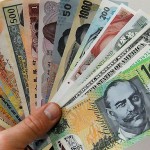Yesterday’s trade saw EUR/USD within the range of 1.1381 – 1.1225. The pair slid 0.32% to close at 1.1239.
At 08:01 GMT today EUR/USD was up 0.32% for the day to trade at 1.1275. The cross held in a daily range of 1.1180 – 1.1280 and is up 2.6% for the week so far, having lost almost 4.1% during the previous two weeks.
Fundamental view
Eurozone
German seasonally-adjusted factory orders, an indicator gauging the change in the total value of new purchase orders placed for durable and non-durable goods, rose by 1.4% in April, the Federal Ministry for Economic Affairs and Energy reported at 06:00 GMT. This followed an upward-revised 1.1% in March which ended two straight months of declines. Factory orders are considered a key indicator for analyzing the short-term trend in production in Germany.
Meanwhile, Eurostat is expected to release at 09:00 GMT its second estimate on the Eurozones GDP growth rate for the first quarter of 2015. The statistics agency reported on May 13th that the euro areas economy expanded at the annualized rate of 1.0% in the first three months of the year, following a 0.9% increase of the GDP in the fourth quarter, according to final data. Todays second estimate is expected to confirm the initial reading.
Quarter-on-quarter, GDP growth was at 0.4% in the three months through March, Eurostat reported on May 13th, and todays estimate is expected to provide a confirmation. This follows a 0.3% economic expansion in the last quarter of 2014. Q1 growth was the biggest gain in seven quarters, boosted by strong performance by Italy and France, while Germany disappointed.
The GDP represents the total monetary value of all goods and services produced by the region over a specific period of time. What is more, it is the widest indicator of economic activity in the area. Currency traders will usually look for higher rates of growth as a sign that interest rates may follow the same direction. Higher interest rates will usually attract more investors, willing to purchase assets in the Euro area, which in turn will boost demand for the common currency. Therefore, in case growth in the single currency zone exceeded expectations, this would provide support to the euro.
United States
Employers in all sectors of the US economy, excluding the farming industry, probably added 225 000 new jobs in May, according to the median forecast by experts, after a jobs gain of 223 000 in April, which was a strong rebound from Marchs plunge to 85 000.
Job gains were seen in professional and business services in April, as well as healthcare and construction, while mining continued to decline.
The non-farm payrolls report presents the total number of US employees in any business, excluding the following four groups: farm employees, general government employees, employees of non-profit organizations, private household employees. The reading typically varies between 10 000 and as much as 250 000 – 300 000 at times when the economy is performing well. Despite the volatility and the possibility of large revisions, the non-farm payrolls indicator presents the most timely and comprehensive reflection of the current economic state. Total non-farm payrolls account for 80% of the workers, who produce the entire Gross Domestic Product of the United States. In case of a lesser-than-expected gain in jobs, the US dollar would certainly see selling pressure.
Average Hourly Earnings probably increased 0.2% in May from a month earlier. Earnings rose by another 0.1% in April, a fourth straight monthly increase. Average weekly hours probably remained unchanged at 34.5.
Unemployment
The rate of unemployment in the country probably remained at 5.4% for a second month in May, the lowest since May 2008.
The unemployment rate represents the percentage of the eligible work force that is unemployed, but is actively seeking employment. A person who is not classified as employed or unemployed is excluded from the statistics. One counts as unemployed, if they fall in all of the following categories: they were unemployed during the last week; they were able bodied; they have been seeking employment for a period of at least four weeks, which end during the week when the research is conducted. People who have been laid off and are awaiting to be hired again are also classified as unemployed. In case the unemployment rate met expectations or even fell further, this would have a bullish effect on the greenback, because of the positive implications for consumer spending. The Bureau of Labor Statistics will release the official employment data at 12:30 GMT.
Pivot points
According to Binary Tribune’s daily analysis, the pair’s central pivot point stands at 1.1282. In case it penetrates the first resistance level at 1.1338, it will encounter next resistance at 1.1438. If breached, upside movement may attempt to advance to 1.1494.
If the cross drops below its S1 level at 1.1182, it will next see support at 1.1126. If the second key support zone is breached, downward movement may extend to 1.1026.
In weekly terms, the central pivot point is at 1.0939. The three key resistance levels are as follows: R1 – 1.1059, R2 – 1.1131, R3 – 1.1251. The three key support levels are: S1 – 1.0867, S2 – 1.0747, S3 – 1.0675.





